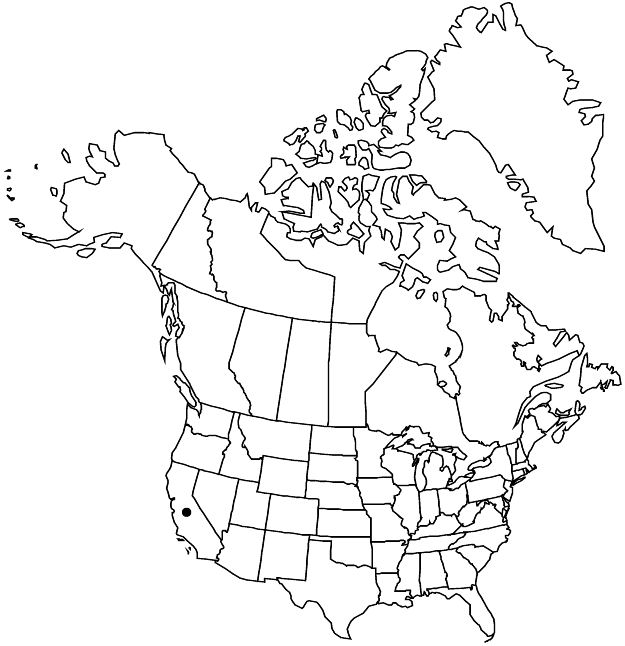Sidalcea keckii
Contr. Dudley Herb. 3: 56, plate 13, figs. 2 – 6. 1940.
Herbs, annual, 0.1–0.4 m, not glaucous, with taproot. Stems single, erect, sometimes branched distally, solid, short-stellate-puberulent and long, soft bristly-hairy, distally with multicellular trichomes intermixed, hairs erect. Leaves cauline, 3–5 per stem; stipules linear-filiform, undivided or rarely few-divided in robust plants, 3–5 × 1 mm; petiole 2–4.5(–6) cm, usually 1–2 times as long as blade; blades: proximalmost orbiculate, unlobed, 1–2.5 × 1–2.5 cm, base cordate with narrow sinus, margins crenate, apex rounded; other proximals rounded, unlobed or shallowly palmately 7–9-lobed, 2.5–4.8(–6) × 2.5–4.8(–6) cm, margins coarsely crenate, sinus wide to narrow, surfaces stellate-hairy; distals gradually reduced, orbiculate, more deeply 3-lobed, 1.5–2.5 × 1.5–2.5 cm, lobes obovate, apically widened to nearly truncate and narrowed to base, margins entire, apex 2–5-toothed, teeth subequal. Inflorescences erect to ascending, usually open, calyces not overlapping except possibly in bud, unbranched or infrequently branched, 5–12-flowered per branch, not especially elongate, usually 1-sided, 5–10 cm, to 5–15 cm in fruit, 1/2 times plant height; bracts linear-filiform, undivided or rarely few-divided in robust plants, (3–)7–11 mm, longer than pedicels, usually much shorter than calyx, not involucrelike, densely stellate-hairy and pilose-hirsute. Pedicels 2–4 mm, to 5–6 mm in fruit; involucellar bractlets absent. Flowers bisexual; calyx 8–10 mm, to 11–14 mm in fruit, lobe base within with conspicuous, purplish spot 1–2 mm wide, hairy, hairs glandular and non-glandular, multicellular as in inflorescence; petals dark pink, without pale veins, with or without reddish basal spot, 10–22(–26) mm; filaments connate to apex of tube; staminal column 3–5 mm, hairy, hairs relatively long, simple; anthers white; stigmas 4 or 5. Schizocarps 5–7 mm diam.; mericarps 4 or 5, usually tinted pink when fresh, 3–4 mm, usually glabrous, back reticulate-veined, pitted, with prominent midvein, mucro absent but with 1–5 minute bristles in its place. Seeds 1.5–2 mm.
Phenology: Flowering Apr–May(–Jun).
Habitat: Grassy slopes, tolerant of, not restricted to, serpentine
Elevation: 70–700 m
Distribution

Calif.
Discussion
Sidalcea keckii, federally listed as endangered, was once thought to have been extirpated (S. R. Hill 1993); it was rediscovered in 1992. It appears to have occurred historically in at least seven counties; extant populations are thought to be very few. It is found in the southern inner North Coast Ranges in Colusa, Napa, Solano, and Yolo counties, and in the Sierra Nevada foothills in Fresno, Merced, and Tulare counties. It is closely related and similar to S. diploscypha and is often mistaken for that species; differences between the two are discussed under 8. S. diploscypha. Some plants of S. keckii in Colusa, Solano, and Yolo counties have divided bracts like those of S. diploscypha. Sidalcea keckii is vulnerable to agricultural and residential land development.
Of conservation concern.
Selected References
None.